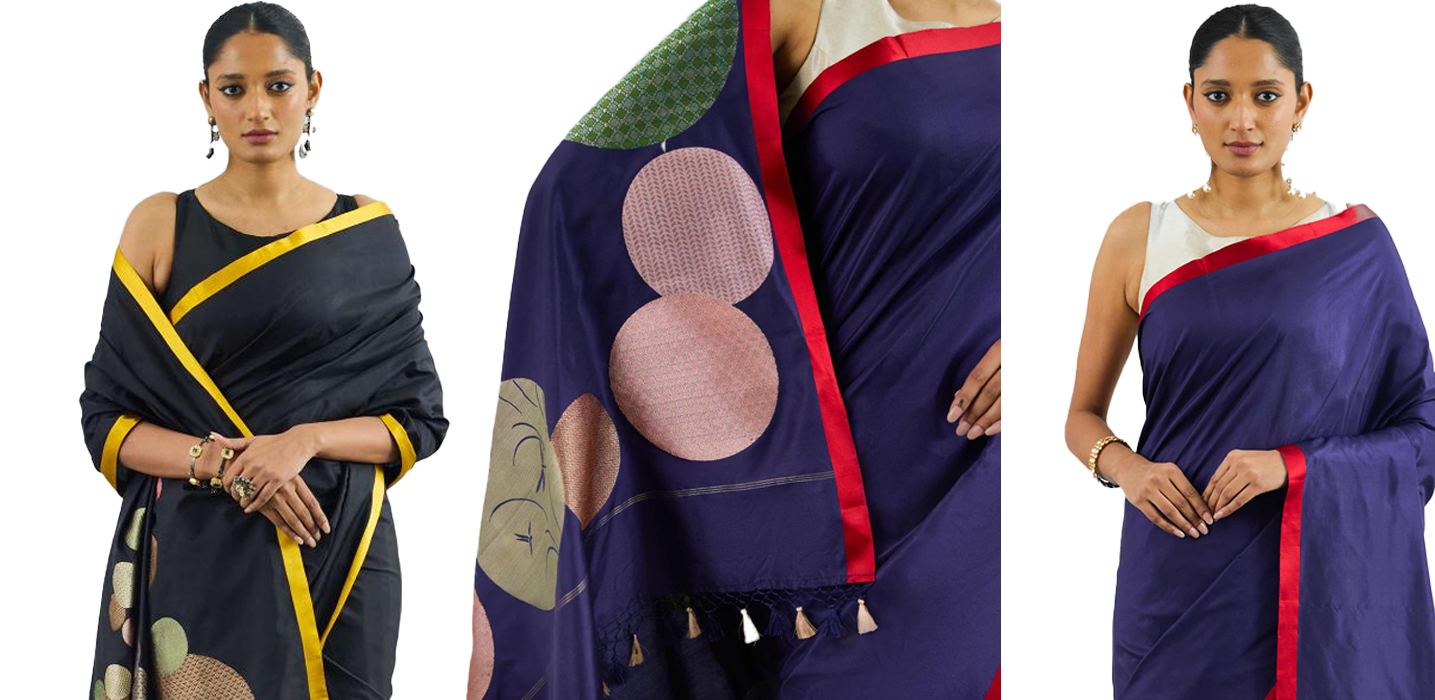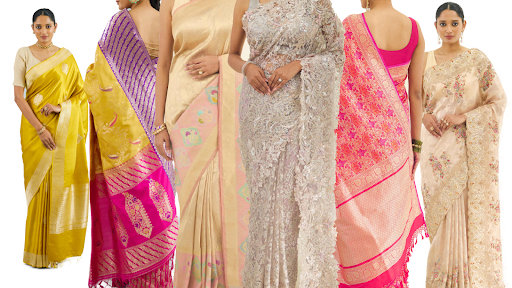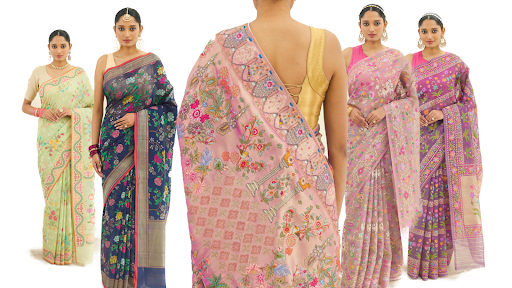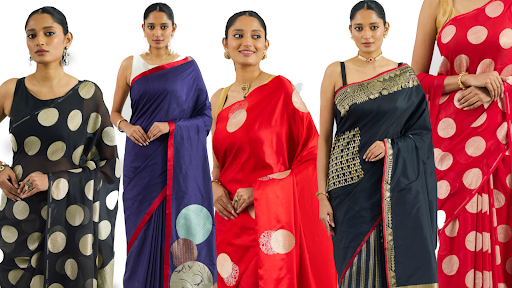Get 10% off on your first order. Use code FRONTIERRAAS10
Code Nostalgia
The New Era of Raas Saris

In the quiet corners of some closets lies a sari, patiently folded, brimming with anticipation for its
special day. For others, it’s a daily companion, washed, dried, and hung with care, swaying gently in the
garden breeze. The drapes of a saree tell stories in every
Indian household, with cherished memories woven into the pleats and sheltered in the pallu.
Be it the intricately woven Banarasi
sari on jacquard pit looms or an airy organza, every version of the sari possesses its distinct
characteristics yet holds the same significance—the very soul of a culture.
With over a hundred different ways to drape the saree, the attire has captured the interest of a new
generation of saree wearers, especially with its rising popularity on international red carpets. From Naomi
Campbell’s Met Gala appearance in a saree to Gen-Z stars like Ananya Panday championing the silhouette on
global platforms, this Indian emblem has traveled the world.
As the global fashion industry leans into diversity and inclusion, the Indian designer saree
has found itself at the forefront of conversations on cultural representation. It is no longer viewed as
just traditional attire but rather as an evolving statement piece that can be adapted to contemporary
aesthetics. Designers across the world are experimenting with sarees, from structured pre-draped styles to
playful reimaginings in unconventional fabrics. The question remains: is being trendy really the goal, or
should fashion be about authenticity and personal style?
While trends come and go, the designer saree remains
timeless. Being trendy is seriously overrated; updated silhouettes and brand-new pieces might inject a sense
of newness into your wardrobe, but authenticity is what truly makes a garment special. If you love your
mother’s pure Moonga saree from decades ago, you should be able to wear it in 2025 with the
same pride. Vintage pieces carry sentiment, craftsmanship, and a personal story—elements that fast fashion
simply cannot replicate.
Inspired by this approach to dressing, Frontier Raas has launched a fresh range of pure handloom sarees to bring back
what is often called “outdated,” but is in reality a new normal to be worn with pride. What made the cut?
Everything from Georgette Banarasi to handpicked Jamdani weaves, proving that the Indian
saree is not just a relic of the past but a dynamic piece that fits seamlessly into the present. These
handcrafted sarees celebrate the skill of artisans who have spent decades perfecting their
craft, ensuring that every drape carries a unique touch of heritage.
The saree is no longer confined to festive occasions or traditional events—it’s being worn to brunches,
fashion weeks, and even workplaces, signaling a shift in its perception from ‘occasional wear’ to ‘everyday
wear.’
The resurgence of sarees in high fashion has also given rise to a newfound appreciation for
sustainability.Whether it’s an antique Banarasi passed down through generations or a newly acquired Chanderi
weave, sarees embody sustainability by their very nature—they are not discarded after a few wears but
instead treasured for a lifetime.
As we move forward, fashion’s real essence lies in celebrating what is personal and meaningful. The saree is
not about staying on trend; it’s about embracing its legacy while making it your own.
So, whether it’s a breezy organza draped for a modern soiree or a treasured Jamdani that has seen
generations, the saree continues to be a fashion statement that transcends time, proving that the old is, in
fact, the new cool.








